Last Updated on August 28, 2024
Overview of Tire Tread Importance
Welcome to the comprehensive guide on “The Influence of Tire Tread Designs on Truck Performance” by Tires Easy Truck. This article investigates the importance of tire treads and their impact on truck performance. Tires, as the truck’s point of contact with the road, are critical to ensuring vehicle safety, efficiency, and overall performance. In this introduction, we hope to provide an overview of the significance of tire treads and define the goals of this article.
Overview of Tire Tread Importance
Tire treads are a vital part of the tire and the driving force behind its functionality. The tread’s design, depth, and pattern directly impact the truck’s ability to grip the road, which is critical for safe and effective operation. The tread pattern influences several aspects of driving, such as grip, handling, braking, and even fuel efficiency.

- Traction and Grip: Tire treads’ primary purpose is to provide traction. The tire can hold the road thanks to the tracks, especially in unfavorable circumstances like wet or slick surfaces. The tread pattern’s grooves direct water away from the tire, lowering the possibility of hydroplaning and enhancing wet traction.
- Handling and Stability: Tire treads are also essential for handling and stability. Well-designed prints make Better cornering and stability possible, particularly when the truck is towing large loads or negotiating tricky terrain.
- Braking Efficiency: A truck’s tire tread condition dramatically impacts the braking system’s performance. Deeper, better-maintained tracks increase road safety and shorten stopping distances.
- Fuel Economy: Tire treads also affect fuel economy. Tires with the best tread designs can increase a truck’s fuel efficiency by lowering rolling resistance.
Objective
The primary objective of this article is to educate truck owners and operators about the importance of tire tread designs in truck performance. We aim to:
- Provide detailed insights into how different tread patterns affect truck performance in various conditions and terrains.
- Discuss the safety implications of tire treads, emphasizing the need for regular maintenance and timely replacements.
- Highlight the advancements in tread technology and how they enhance truck efficiency and safety.
- Offer guidance on selecting the right tire treads based on specific trucking needs and conditions.
Through this article, Tires Easy Truck seeks to empower readers with knowledge leading to informed decisions about tire selection and maintenance, ultimately contributing to safer, more efficient, and more economical truck operations.
Understanding Tire Treads
This section delves into the basic principles of tire treads, primarily emphasizing their construction and the range of truck tire varieties available. Truck owners and operators must know how to choose tires to ensure the best performance and safety.
The Basics of Tire Tread Design
The tread design of tires is a technical engineering achievement that strikes a compromise between several performance attributes. These are the essential components:
- Step Pattern: The most visible feature of a tire’s design is its tread pattern. It consists of grooves, blocks, and sipes positioned differently to accomplish different performance objectives. The pattern impacts traction, noise levels, wear rate, and water evacuation.
- Depth of tread: This refers to the tire tread’s groove depth. While deeper treads often offer superior traction, they may also make rolling more difficult. Maintaining grip requires a certain tread depth, particularly in damp situations.
- Tread Compound: The material composition of the tread impacts its durability, flexibility, and grip. Softer compounds generally provide better traction but wear out faster, whereas more complex compounds last longer but may offer less grip.
- Tread Width: The width of the tire tread impacts the contact area between the tire and the road. Wider tracks can offer better stability and handling but may also affect fuel efficiency.
Types of Tire Treads for Trucks
Different driving conditions and applications necessitate different types of tire treads. Here are some common types:
- Highway Treads: Made for long-distance highway travel, these threads usually have a ribbed pattern that offers excellent stability, a comfortable ride, and economical fuel use. For trucks that travel on highways the majority of the time, they are perfect.
- Off-Road Treads: Off-road treads are perfect for trucks traversing rugged, uneven terrain. They boast aggressive, sizable tread blocks that offer superior traction on rocky, gravel, and mud surfaces. Because of their increased noise and decreased fuel efficiency, these threads are not the best choice for daily highway driving.
- All-Purpose/Mixed-Service Treads: All-purpose/mixed-service treads compromise highway and off-road treads. They are adaptable for trucks in various settings because they are made to function effectively in multiple circumstances.
- Winter Treads: With deeper grooves and distinctive tread patterns, winter treads are made explicitly for colder climates and wintry situations. They improve traction on ice and snow and are frequently composed of softer material to maintain flexibility in chilly weather.
- Fuel-Efficient Treads: These treads are designed to decrease rolling resistance, which enhances fuel efficiency in light of the increased focus on fuel economy. They work well for long-distance trucks where fuel efficiency is a top concern.
Tread Designs and Truck Performance
Tire tread patterns largely determine truck performance. This part of our thorough guide focuses on how various tread types affect truck traction and grip, fuel efficiency, and stopping distance.
Impact on Traction and Grip
The capacity of the tire to hold the road surface is referred to as traction, and it is essential for safe movement and control, particularly in difficult situations like snowy or wet roads. The tread design has a significant impact on this:
- Tread Pattern: A tire’s ability to grip the road is affected by the placement of its tread blocks, grooves, and sipes. For example, an aggressive tread pattern with deeper grooves works better in off-road situations because it offers more traction on loose ground like gravel or mud.
- Tread Compound: The rubber compound used in the tread also affects traction. More complex compounds are durable but may provide less grip, particularly in cold circumstances. Softer compounds offer better grip but tend to wear out faster.
- Tread Depth: Deeper treads allow for better water evacuation, reducing the risk of hydroplaning and maintaining grip in wet conditions. As prints wear down, their ability to evacuate water decreases, reducing traction.
Influence on Fuel Efficiency
Tire treads also play a significant role in a truck’s fuel efficiency:
- Rolling Resistance: The tread design can affect the tire’s rolling resistance, which is the energy required to keep the tire moving at a constant speed. Tires with lower rolling resistance need less power, thus improving fuel efficiency.
- Tread Compound and Configuration: Some modern treads are designed with unique compounds and configurations to minimize rolling resistance without compromising traction.
Effect on Braking Distance
The ability of a truck to stop effectively is crucial for safety, and tread design is a critical factor in braking performance:
- Tread Pattern and Depth: Tires with appropriate tread designs and sufficient depth can significantly reduce braking distances, especially in wet conditions. The grooves in the tread help to channel water away from the tire, allowing for better contact with the road surface.
- Tread Wear: It’s important to note that as treads wear down, their effectiveness in braking diminishes. Regularly checking tread depth is essential for maintaining optimal braking performance.
Tire Treads for Different Terrains
Choosing the proper tire tread is crucial for a truck’s operation because trucks frequently travel over uneven terrain. This section of our guide examines the particular tire tread designs appropriate for off-road, highway, and mixed-use driving situations.
Treads for Off-Road Conditions
Off-road driving, which involves navigating through rough, uneven, and often slippery terrain, demands tires with specific characteristics:
- Aggressive Tread Patterns: Large, robust tread blocks with deep grooves are a common element of off-road treads. These patterns improve traction on loose terrain like dirt, sand, or gravel. The tread design is open to enhance mud and debris ejection, reduce clogging, and preserve grip.
- Reinforced Sidewalls: Off-road tires frequently feature reinforced sidewalls to endure the rigors of rugged terrain and lower the chance of punctures or damage.
- Rubber Compounds: To improve traction on uneven terrain, off-road tires are typically constructed with softer rubber compounds, albeit this might accelerate wear on conventional roads.
Highway Treads for Long Hauls
Tires for trucks that are primarily used on highways need to be made for long-distance stability and efficiency:
- Ripped Thread Patterns: Highway threads typically include ribbed patterns, offering a more stable and comfortable ride at incredible speeds. With a focus on constant road contact, these treads are less aggressive than off-road treads.
- Long-Wearing Compounds: Because long hauls sometimes involve significant usage, the rubber compounds used in highway treads are usually more rigid and offer superior resistance to wear and tear.
- Low Rolling Resistance: Long-haul trucks must maximize fuel efficiency, so these treads reduce rolling resistance to the barest level.
Treads for Mixed-Use Scenarios
Trucks used in mixed-use scenarios, such as regional deliveries or construction sites, require versatile tire treads:
- All-Purpose Tread Designs: These treads balance off-road aggression and highway efficiency. They usually feature a more varied tread pattern than highway tires but are less aggressive than dedicated off-road treads.
- Durability and Versatility: The rubber compounds and tread design are chosen to provide durability and performance across various surfaces, from paved roads to light off-road conditions.
- Adaptability: Mixed-use treads are designed to perform well in various weather conditions and terrains, making them a practical choice for trucks with diverse driving conditions.
Seasonal Tread Considerations
Truck performance is significantly impacted by the kind of tire tread, mainly when there are seasonal fluctuations. This area of our guide addresses the features, advantages, and effectiveness of the various tread types appropriate for the winter, summer, and all-season seasons.
Winter Treads: Features and Benefits
Winter treads are specifically designed to provide safety and performance in cold, snowy, and icy conditions:
- Enhanced Traction on Snow and Ice: Winter treads have deeper grooves and unique tread patterns that improve grip on snow and ice. They are often designed with a more significant number of sipes (small slits in the tread blocks) that provide additional biting edges for better traction.
- Soft Rubber Compounds: The rubber compounds used in winter treads are softer and more flexible at lower temperatures, ensuring better road contact and grip in cold weather.
- Benefits: Winter treads are primarily used for safety. They significantly reduce the risk of skidding and improve braking performance in winter conditions, which is crucial for heavy trucks.
Summer Treads: Design and Efficiency
Summer treads are proper for performance in warm weather and dry or wet road conditions:
- Tread Design: Summer treads feature a more straightforward pattern and fewer grooves than winter treads. In dry circumstances, this design’s increased contact area between the tire and the road improves stability and grip.
- Composition and Durability: Summer tires often have a more complex rubber composition, which helps them survive high temperatures and minimizes wear from driving in hot weather.
- Efficiency: Summer treads have less rolling resistance, providing better fuel efficiency. They also offer better handling and reactivity, especially for vehicles operating on highways or at higher speeds.
All-Season Treads: A Balanced Approach
All-season treads are designed to be a vast option, suitable for a variety of driving conditions throughout the year:
- Versatile Tread Pattern: All-season tires combine winter and summer tread features. They operate effectively in dry and wet weather and light snow, thanks to their moderate tread depths and patterns.
- Rubber Compound: The rubber compound used in all-season treads sacrifices the durability needed in warm weather and the softness required in cold weather.
- Advantages: The critical benefit of all-season treads is convenience. They offer a respectable degree of performance and safety in most driving situations, eliminating the necessity for seasonal tire changes. In severe circumstances, they would have to match the customized model of winter or summer treads.
Safety and Tire Treads
The safety of trucks on the road is heavily influenced by the condition of their tires, particularly the tread depth and overall tread wear. In this section, we discuss the critical role of tire treads in maintaining safety, focusing on how tread depth affects safety and how to recognize tire wear and tear.
How Tread Depth Affects Safety
Tread depth is a critical factor in ensuring safe driving conditions, particularly in adverse weather:
- Traction and Grip: Sustaining adequate traction requires a sufficient tread depth. Tires with tread can adequately grip the road, especially when it’s rainy outside. However, the tire’s capacity to disperse water decreases with tread depth, raising the possibility of hydroplaning.
- Braking Distance: Braking distance is also influenced by the tire’s tread depth. Worn treads might result in longer stopping distances, especially on slick or rainy roads. This is especially important for large cars like trucks, whose size and weight require them to stop at a naturally greater distance.
- Legal prerequisites: Each region has its minimum tread depth restrictions set by law. The required minimum tread depth for trucks is approximately 1/16th of an inch. More crucially, driving with tires below the legal limit can lead to compromises rather than fines.
Recognizing Tire Wear and Tear
Regular inspection of tire treads is essential for knowing signs of wear and tear:
- Visual Inspection: Regularly check for visible signs of wear, such as uneven tread wear, bald spots, or cuts and bulges in the tires. Uneven wear can indicate alignment or suspension issues.
- Tread Wear Indicators: Modern truck tires often have tread wear indicators within the grooves. When these indicators are flush with the tread surface, the tread depth has reached its minimum safe limit.
- Use of a Tread Depth Gauge: A more accurate method to measure tread depth is using a tread depth gauge. This tool gives precise measurements, allowing for a better check of when the tires need to be replaced.
- Regular Maintenance: Including tire inspection in everyday maintenance routines ensures early signs of wear and potential issues. Maintaining proper tire inflation is also essential, as underinflated or overinflated tires can lead to irregular wear.
Maintenance and Care of Truck Tires
Effective maintenance and care of truck tires are essential for ensuring the tires’ safety, efficiency, and longevity. This section provides detailed information on how to maintain truck tires and guidelines on when to replace them.
Regular Inspection and Maintenance Tips
Regular inspection and maintenance of truck tires can significantly extend their life and enhance vehicle safety:
- Regular Tire Inspections: Conduct thorough inspections of the tires at regular intervals. Look for signs of wear and tear, such as tread wear, cracks, bulges, or embedded objects. Ensure the tires are free from defects that could lead to tire failure.
- Preserve Appropriate Tire Pressure: Tire longevity and fuel economy depend on maintaining tires at the proper pressure. Overinflated tires increase the risk of damage from road debris, while underinflated tires might result in uneven wear. Regularly check the tire pressure, ideally with the tires cold.
- Tracking Tread Depth: Monitor the tread depth to ensure it is within safe and legal bounds. Use a tread depth gauge for exact readings. Tires must be changed when the tread depth reaches 1/16th of an inch or the tread wear indications align with the tread surface.
- Tire balancing and rotation: These procedures can help prevent uneven tire wear. This is especially crucial for trucks, as different loads cause uneven tire wear.
- Alignment Checks: Ensure that the truck’s alignment is checked periodically. Improper alignment can lead to uneven wear on tires and negatively impact handling and fuel efficiency.
When to Replace Truck Tires
Knowing when to replace truck tires is crucial for maintaining road safety:
- Minimum Tread Depth: When the tread depth hits the statutory minimum, typically one-sixth of an inch, replace the tires. A worn tread compromises the tire’s ability to grip the road, particularly in wet weather.
- Visual Damage: Deep cuts, big bulges, or sidewall damage are examples of visual damage that signals the need to replace the tire.
- Tire Age: Ageing causes the tires to need replacement after a particular time, even if there isn’t any noticeable wear on them. Generally speaking, truck tires should be changed every three to six years, depending on usage and storage circumstances.
- Performance Problems: It may be time to change the tires if they lose air often or the truck has handling or vibration problems.
- After a Puncture or Repair: If a tire has been punctured and repaired multiple times, it may be safer to replace it, mainly if the punctures are near the sidewall or in the main tread area.
Advancements in Tread Technology
In recent years, tread technology has made notable progress within the tire business. Tire performance, efficiency, and safety have all significantly increased due to these advancements. This section examines the most recent, cutting-edge tread patterns and anticipated future developments in tire treads, especially for trucks.
Innovative Thread Designs
Modern tire technology has introduced several innovative designs aimed at enhancing tire performance:
- Eco-Friendly Treads: There’s a growing trend towards eco-friendly tread compounds that reduce rolling resistance and fuel consumption. These threads are not only better for the environment but also help in reducing operational costs.
- Self-Regenerating Treads: Some manufacturers are developing tires with self-regenerating treads. Because of the unique groove design of these treads, traction, and performance are maintained for a longer time when the tire wears down and changes patterns.
- Advanced Water Evacuation: Improved tread pattern designs strongly emphasize effective water evacuation to improve wet traction and lower the risk of hydroplaning. This includes groove layouts and sipe designs that work better.
- Noise-Reducing Treads: Another area of focus is lowering road noise. Tire tread patterns reduce the air noise tires produce to provide a quieter and more comfortable ride.
- Wear-Indicating Treads: Some recent tread designs have included wear indicators that go beyond the regular tread wear bars to give a more accurate warning when tires need replacement.
Future Trends in Tire Treads
The future of tire technology is likely to bring even more exciting developments:
- Smart Tire Technologies: Tire treads with integrated sensors are expected to become increasingly common. These sensors’ ability to deliver real-time data on tire health, tread depth, temperature, and pressure makes proactive maintenance and improved safety possible.
- 3D-Printed Treads: 3D printing technology makes more tread design precision possible when producing tire treads. This technique allows treads to be made to order for specific uses or preferences.
- Sustainable Materials: Research is ongoing on employing more renewable and sustainable materials to manufacture treads. This involves sourcing bio-based ingredients to lessen dependency on conventional rubber compounds derived from petroleum.
- Airless Tires: While still in the developmental stage, airless tires promise to revolutionize the tire industry. These tires, which do not require air pressure, are expected to offer superior durability and eliminate the risk of punctures.
- Climate Adaptive Treads: Another frontier is developing treads that automatically adapt to weather conditions. These treads would change their characteristics based on temperature and surface conditions, offering optimal environmental performance.
Choosing the Right Tread for Your Truck
Selecting the appropriate tire tread for a truck is a critical decision that affects the vehicle’s performance, safety, and operating costs. This section provides a comprehensive guide on the factors to consider when choosing the proper tread for your truck and the importance of consulting with tire experts.
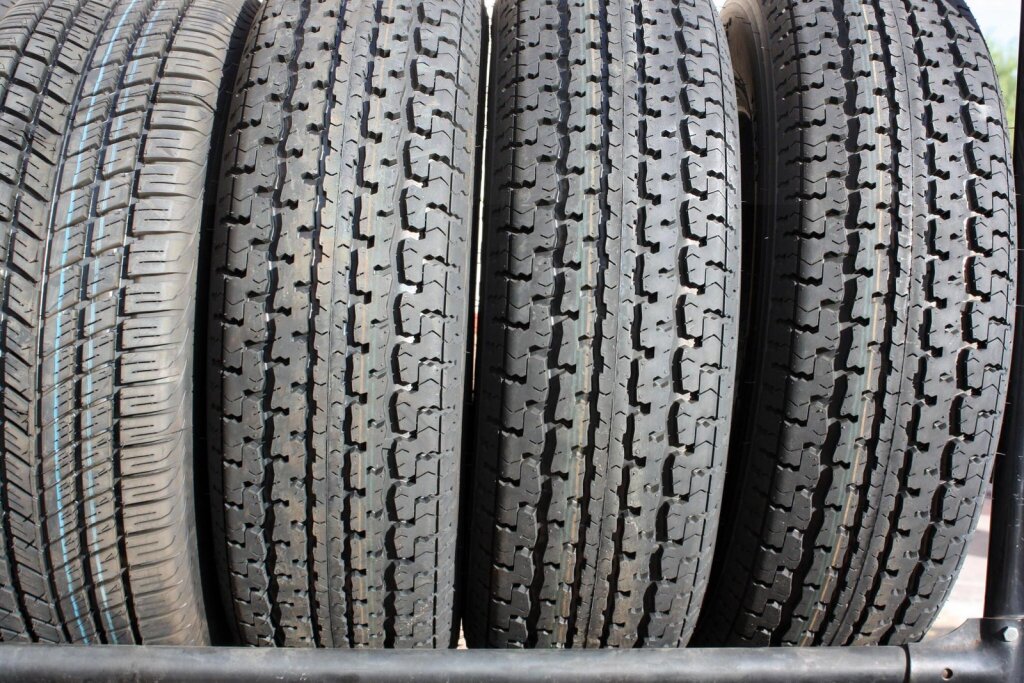
Factors to Consider
Several key factors should be taken into account when selecting truck tire treads:
- Type of Terrain: Consider the primary surfaces your truck will be driving. Off-road tires are suited for rough terrain, highway treads for long-distance travel, and all-purpose treads for various conditions.
- Weather Conditions: Your operating area’s climate and weather conditions are crucial. For instance, winter treads are essential in areas with heavy snowfall, while summer or all-season treads may be more appropriate in warmer climates.
- Load and Usage: The weight and type of loads carried and the frequency and distance of trips influence the choice of treads. Heavier loads and longer trips typically require more durable and fuel-efficient treads.
- Fuel Efficiency: For long-haul trucks, fuel efficiency is a significant concern. Tires with low rolling resistance can reduce fuel costs over time.
- Safety Features: Look for treads that offer enhanced safety features, such as improved grip, shorter braking distances, and resistance to hydroplaning.
- Tread Life and Durability: Consider the expected lifespan of the treads. More durable treads may have a higher upfront cost but can be more economical in the long run.
- Cost: While cost is a factor, it should not be the only consideration. Cheaper tires might save money upfront but could be less durable and more costly over time.
Consulting with Experts
Given the complexity and importance of choosing the right tire treads, consulting with tire experts is highly recommended:
- Professional Recommendations: Tire professionals can provide recommendations based on your needs and operating conditions. They have the expertise to suggest the best options that balance performance, safety, and cost.
- Understanding New Technologies: Tire technology is constantly evolving. Experts can help you understand the latest advancements and how they can benefit your operation.
- Safety and Compliance: Tire experts can ensure that the treads you choose comply with legal requirements and safety standards.
- Custom Solutions: Sometimes, you might need custom solutions for unique operational needs. Tire experts can assist in identifying and sourcing these specialized products.
Conclusion & Recommendation
As we conclude this comprehensive guide on tire treads and truck performance, it’s important to recap the key points and provide final thoughts on how the right tire treads can significantly enhance trucks’ performance, safety, and efficiency.
The guide began by outlining the importance of tire treads, highlighting their role in ensuring traction, fuel efficiency, and safety. It then discussed the different designs and types of footprints for various terrains and conditions, emphasizing the need to choose prints based on specific driving environments. Seasonal variations in tread requirements were also explored, underscoring the necessity of using appropriate treads for different weather conditions to maintain optimal performance and safety.
We also delved into the safety aspects of tire treads, focusing on how tread depth impacts safety and the importance of recognizing tire wear and tear. This was followed by practical advice on the maintenance and care of truck tires, including tips on regular inspection, maintenance routines, and knowing when to replace tires.
Advancements in tread technology were examined, showcasing innovative designs and future trends that promise to enhance tire performance further. The guide concluded with guidance on choosing the proper tread for your truck, considering various factors such as terrain, weather, load, and usage, and the importance of consulting with tire experts for informed decisions.
Final Thoughts
The choice of tire treads is critical for any truck operator or owner. It’s not just about the tires but the truck’s overall performance, safety, and efficiency. Properly selected and maintained tire treads can significantly improve vehicle handling, fuel economy, and security, impacting the bottom line and operational success.
In today’s dynamic and challenging driving environments, understanding and leveraging tire technology advancements is crucial to staying ahead. The correct tire treads can substantially affect your truck’s performance for long-haul transportation, off-road applications, or mixed-use scenarios.
Why choose Tires Easy Truck?
At Tires Easy Truck, we understand the importance of having the right tire treads for your truck’s performance and safety. Our extensive selection of high-quality tires caters to all your needs, whether driving on highways, navigating challenging off-road terrains, or facing varying weather conditions. We offer a range of options incorporating the latest advancements in tire technology, ensuring you have access to the best products in the market.
We invite you to explore our collection and take advantage of our expert advice to find the perfect tire treads for your truck. With Tires Easy Truck, you can be confident in your choice, knowing that you are equipped with tracks that deliver optimal performance, safety, and efficiency.
[Explore Our Collection and Find the Perfect Tires for Your Truck]
FAQs
What are the four types of tire treads?
There are four primary varieties of tire treads: highway treads, which are intended for long-distance, smooth driving; off-road prints, which are best for uneven terrain; all-season treads, which can be used in any weather; and winter treads, which are specifically made for snow and icy situations.
What is a good tread depth for a truck tire?
A good truck tire tread depth is usually around 4/32 to 5/32 inches. This depth ensures proper traction and safety, especially under heavy load conditions.
What is the best tread pattern?
The correct tread pattern depends on the truck’s intended usage. Ribbed prints are appropriate for driving on highways; blocky, aggressive designs are suitable for off-road circumstances, and a mixed or all-purpose approach is advised for various demands.
What is the minimum tread on a truck tire?
Truck tires’ minimum legal tread depth is usually 1/16th of an inch (1.6 millimeters). However, replacing truck tires before they reach this minimum is recommended to ensure safety.
How much tread on truck tires?
New truck tires typically have tread depths of around 10/32 to 19/32 inches. This depth decreases over time with use and should be regularly monitored for safety.
What tread depth should truck tires be replaced?
Truck tires should generally be replaced when the tread depth reaches 4/32 inches for proper safety and performance, especially in wet conditions.
What is proper tire tread?
Proper tire tread refers to the tread depth and pattern suitable for the vehicle’s usage, ensuring safe and efficient driving. It means having sufficient tread depth and a design appropriate for the vehicle’s typical driving conditions.






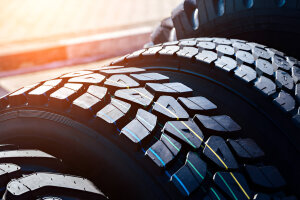
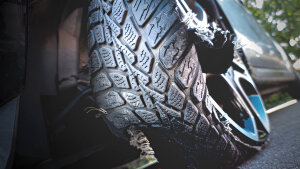

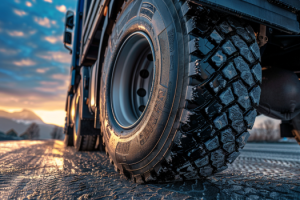
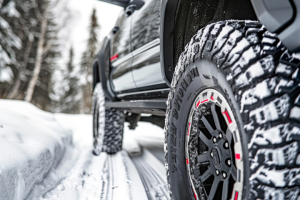
 English
English Français
Français Español
Español